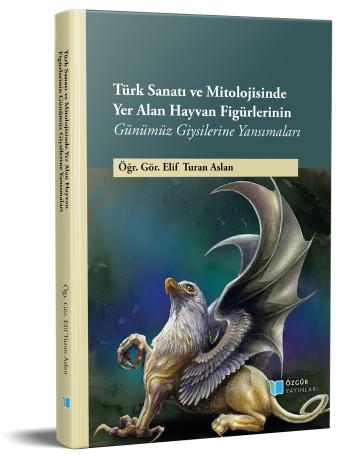
Türk Sanatı ve Mitolojisinde Yer Alan Hayvan Figürlerinin Günümüz Giysilerine Yansımaları
İndir
Özet
Bu çalışmada Türk sanatı ve mitolojisinde yer alan hayvan figürlerinin kaynağını, mitolojik anlamlarını ve uygulandığı sanat dallarını bir bütünlük içerisinde ele alarak sunmak ve esin kaynağı olacak figürlere çağdaş bir yorum katarak giysi tasarımlarına uyarlamak, sürdürülebilirliğini ve kültürel öğelerin moda ve tekstil alanında güncel olarak kullanılabilmesini sağlamak amaçlanmaktadır.
Çalışma kapsamında Türk sanatında mitoloji olgusunun ve hayvan üslubunun büyük bir etkisinin olduğu anlaşılmaktadır. Türk Sanatı ve mitolojisinde kullanılan hayvan figürleri Hun, Göktürk, Uygur, Selçuklu ve Osmanlı dönemlerinde; taş,ahşap,maden,minyatür, çini ve dokuma gibi sanat alanlarında uygulanmıştır. Geçmişten günümüze zenginleşerek gelişen Türk sanatında sıklıklıkla çift başlı kartal, ejder, zümrüdü anka (simurg), grifon, siren, sfenks, kilin gibi efsanevi hayvanlar kullanılmıştır. Efsanevi (fantastik) hayvan figürlerine yüklenen anlamların dini inanç, efsane ve destanlarla şekillendiği görülmektedir. Bu mitolojik kaynaklı hayvan figürleri koruma, bereket unsuru olarak yol gösterici, yardımsever gibi nitelikler barındırmaktadır. Türk Sanatı’nda bitkisel ve geometrik motiflere nazaran hayvansal figürler daha seyrek kullanılmıştır.
Tarihsel süreç içerisinde Türk sanatı ve mitolojisinde yer alan hayvan figürlerinden zümrüdü anka kuşu, çift başlı kartal, ejder, sfenks, siren, grifon ve kilin gibi efsanevi hayvan figürlerinin yer aldığı eserler içerdiği anlamları ile birlikte ele alınarak detaylı bir şekilde incelenmiştir. Hayvan figürleri giysi, giysi tamamlayıcıları üzerinde dijital baskı, pul-boncuk işleme, nakış, aplike, iğneli keçe gibi tekstil yüzey düzenleme ve süsleme teknikleri düşünülerek tasarımlar hazırlanmıştır. Figürlerden zümrüdü anka kuşu, çift başlı kartal, ejder ve sfenks figürleri kullanılarak bilgisayar destekli giysi, şal, çanta ve boyunluktan oluşan 30 adet tasarım yapılmıştır.

